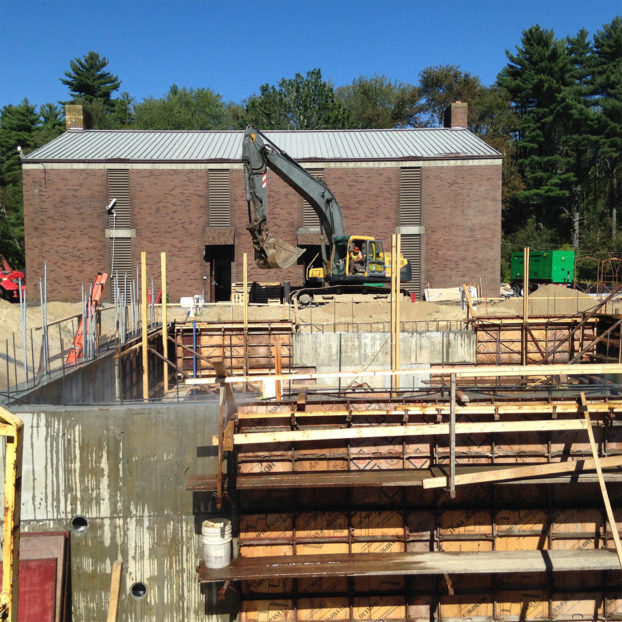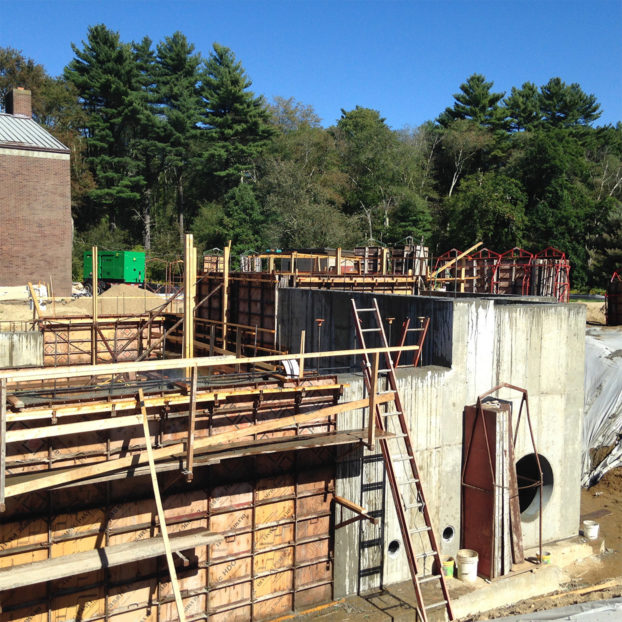The Middleborough Water Pollution Control Facility (WPCF) located in the Town of Middleborough, Massachusetts serves a residential population of approximately 7,200, as well as commercial and industrial areas within the Town. The original WPCF was constructed in 1949 with a capacity of 0.75 million gallons per day (mgd) and the existing WPCF, constructed on the same site in 1977, was designed to treat an average daily flow of 2.16 mgd.
The existing WPCF discharges treated effluent to the Nemasket River in the Taunton River watershed, eventually flowing into Narragansett Bay located in Rhode Island. Environmental Partners was retained by the Town of Middleborough in the Spring of 2015 to provide OPM services for upgrades to the Town’s WPCF in anticipation of new, more stringent nutrient limits in the next NPDES permit, and to replace aging equipment.
The Middleborough WPCF had been operating under a National Pollutant Discharge Elimination System (NPDES) permit issued by the US Environmental Protection Agency (EPA) in late 2003. Due to the negative environmental impacts that nutrient loadings have caused throughout the state, recent NPDES permits are setting nutrient loading limits, specifically for nitrogen and phosphorus.
In May of 2014 the Town was issued a NPDES permit, which required strict compliance with lower Nitrogen and Phosphorous limits. NPDES permits are issued on a 5 year cycle. The permit provided flexibility during construction but full compliance by the Spring of 2019.
The existing facility was an advanced treatment facility, with processes including primary clarification, aeration/activated sludge, secondary clarification, sand filtration, seasonal chlorination using sodium hypochlorite and dechlorination using sodium bisulfite, and post aeration. The facility also removes phosphorous seasonally through chemical precipitation using ferric chloride. Septage is received from the Towns of Middleborough and Lakeville, and sludge solids were dewatered with a belt filter press and disposed of at the Middleborough Town Landfill.
Environmental Partners reviewed the condition of the 40+ year old plant and identified over $26M of improvements necessary to replace aged equipment and to provide the supplementary treatment for nitrogen and phosphorous reduction.
EP completed a plant-wide assessment to evaluate the condition of the WPCF and identified where deficiencies existed with respect to age, current codes, and industry practice. The buildings, structures, and electrical systems were all assessed and recommended improvements were identified. Process improvements were identified to replace aging equipment and provide the necessary Nitrogen and Phosphorous removal.
The existing processes at the plant were modeled using Biowin software to identify the limit of treatment of the existing activated sludge biological process. In order to achieve the expected limits of Nitrogen and Phosphorous of 5 mg/l and 0.1 mg/l respectively, enhancements to the aeration basins were necessary to provide nitrification and denitrification. The most efficient use of existing aeration tanks was based on 5-Stage Bardenpho treatment process with two anoxic zones for denitrification.
Environmental Partners assisted the Town with designer selection, contract negotiation, design reviews, value engineering, prequalification of general contractors and subcontractors. EP also provided a full-time resident engineer during the 2.5 years of construction, and coordinated loan reimbursement through the State Revolving Fund (SRF) program. Construction was completed and final startup and checkout occurred in the late fall of 2017 with construction taking 2.5 years, and startup and commissioning taking an additional 4 months. Cost control was favorable for a complex rehabilitation and new construction project, with change orders ending at 5.2% of the initial bid.







